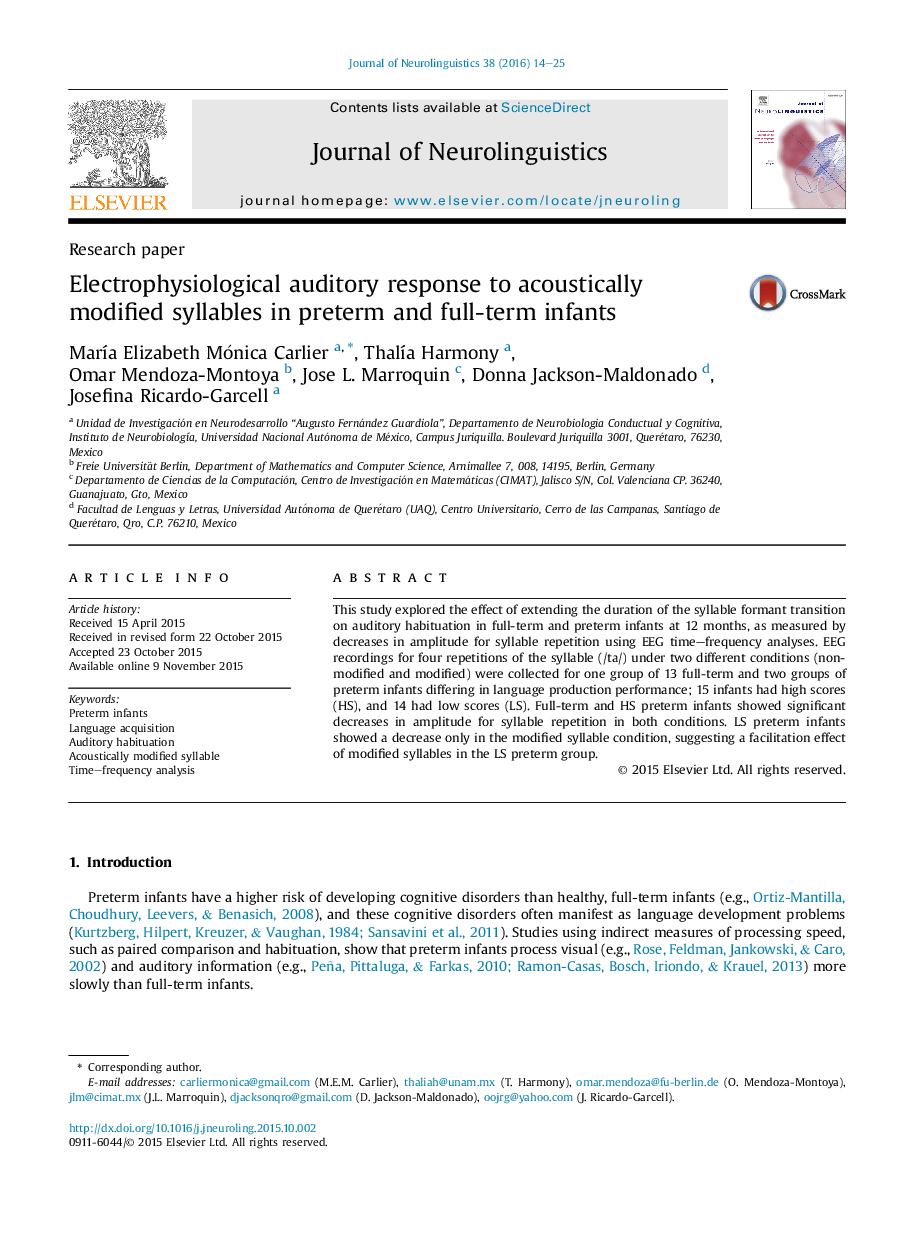| Article ID | Journal | Published Year | Pages | File Type |
|---|---|---|---|---|
| 911735 | Journal of Neurolinguistics | 2016 | 12 Pages |
•The study provides EEG time–frequency measures of the habituation effect in term and preterm infants.•The absence of the EEG measure of the habituation effect is an early predictor of language problems.•Prolonged syllables facilitate syllable processing in at-risk infants.•The study reveals alternatives for early detection and intervention for at-risk infants.
This study explored the effect of extending the duration of the syllable formant transition on auditory habituation in full-term and preterm infants at 12 months, as measured by decreases in amplitude for syllable repetition using EEG time–frequency analyses. EEG recordings for four repetitions of the syllable (/ta/) under two different conditions (non-modified and modified) were collected for one group of 13 full-term and two groups of preterm infants differing in language production performance; 15 infants had high scores (HS), and 14 had low scores (LS). Full-term and HS preterm infants showed significant decreases in amplitude for syllable repetition in both conditions. LS preterm infants showed a decrease only in the modified syllable condition, suggesting a facilitation effect of modified syllables in the LS preterm group.
